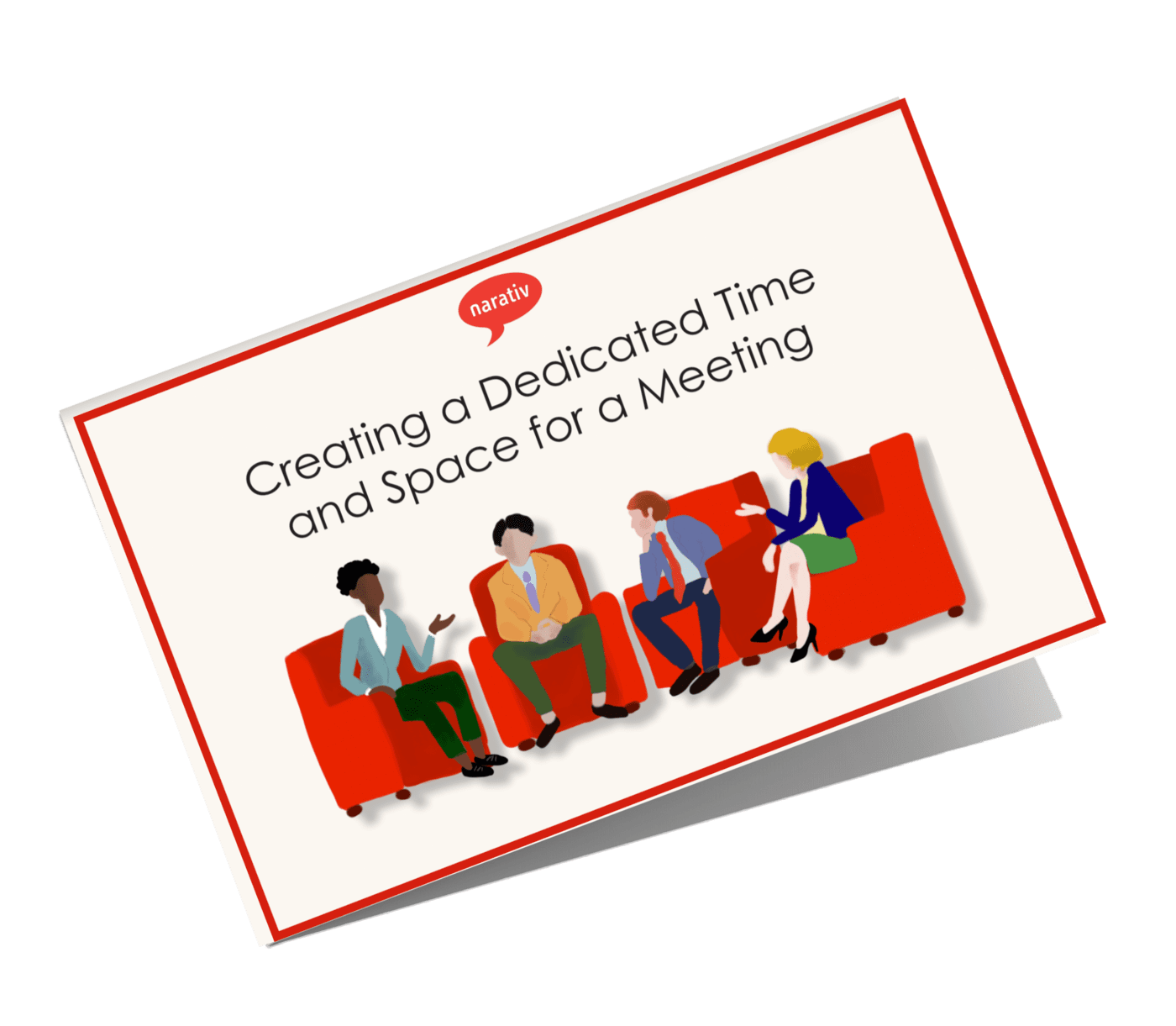Storytelling is a powerful business communication tool. That’s common knowledge. Tony Robbins, Anita Roddick, Steve Jobs—they are all great storytellers. One of Hollywood’s finest, Peter Guber, put it all down in Tell to Win. But, that’s talking about the storytelling we or others have heard or seen. What is it like to be on stage as the storyteller? To be in the driver’s seat? To be the storyteller requires some considerations that are not the usual one undertakes for business communication.
Self discovery
To be a storyteller, a good, effective storyteller, requires a process of self-discovery. This is a fundamentally different process from ordinary business communication, in which speakers rely on highly-coded language, jargon, data visualization, and established conceptual frameworks. For most executives, managers, and employees, the journey they will take to excavate, craft, and present a story will certainly be influenced by the messaging, history and future of their company. But, by necessity, it will also be creative and personal because that is the nature of storytelling.
This personal dimension may be challenging. Many of us are not familiar with looking back in order to identify the best details to use in crafting our story. We need to traverse a landscape of emotions, perceptions, memories and insights. These are the raw materials of a good story. We need to suspend judgment about what we collect otherwise we may miss important findings. Next, to present a story takes confidence. A little boldness and risk need to come into play. As anyone who has taken the journey knows, this process is greatly rewarding. The stories that result create significant impact. We believe it is precisely this merger of the personal with business objectives that makes business storytelling not business as usual.
If you are considering telling a story in your next presentation, here are four principles taken from Narativ’s methodology that layout how to prepare for and best accomplish that goal. Use them as a guide to shape your own storytelling journey of discovery.
Storytelling requires a strong rationale
You cannot build a story if you don’t know your reason for telling it. That reason can’t be, “stories are powerful.” From your first line to your last, there will be no connection — and no emotional turning point — if the goal of your storytelling isn’t crystal clear. Quite literally, stories without a clear rationale don’t work and cannot be constructed. Storytelling is a tonic for muddled thinking.
To combat slack stories or those that drift without meaning, good storytelling practice requires the teller first to think deeply about strategic objectives and business goals. That is their “why now?” This is refreshing for them and beneficial to the story. Otherwise, they might simply launch into the story based on pat ideas or long-standing assumptions. A best practice, rather, is to clarify the why now?, then to seek fresh experiences that become the details of the story. These then lead to a specific and definite endpoint, just as a plane pilot knows where she’s going to land. This is of critical importance. The ending of a business story is equivalent to a call-to-action, so everything that leads there must be well thought-through.
Test this out right now. Ask yourself, why do you need a story at this time? What strategic objective are you looking to communicate about? What concepts do you need to drive home? Who is your audience? Why do they need to hear a story? Think these through before you launch in telling a story. Then, begin to think of the experiences you’ve had that can be turned into a story. That’s when the creativity of storytelling kicks into high gear.
Storytelling requires personal reflection
Storytelling asks us to take stock of something we don’t normally spend too much time assessing: our sense-memories. That may sound odd. Aren’t stories composed of events, actual happenings? Indeed, but the senses are the lens through which we—and our listeners—experience those events.
The sense memories are the touchstone for us to recall experiences and moments and then chew on what they meant to us. Memories evoke different feelings or ideas. How did we feel when we heard about a new initiative? What did we see others do or how did they appear to react? Now, we won’t be talking directly about those feelings; we’ll just tell what happened, a key feature of Narativ’s method. But being aware of the feelings lead us to the next point.
The feelings generated by our memories lead us toward the notion of an emotional turning point, critical to any successful story. This does not necessarily mean a catharsis or a dramatic emotional outburst. It can refer to clarity, for example, when it finally became clear to us and our team that an initiative we had been working on would fail.
Note that the journey of self-discovery of storytelling needn’t be too personal or exposing or intimate. Let’s not misunderstand the term. Primarily, it is called a journey of self-discovery because we take the time to review our experiences through a precise lens—the sense memories—which then engages the rest of our being in a recollection.
How these precise memory-details enrich our story and animate it with emotional resonance is what makes our story vivid and evocative for ourselves and for others. Sense memories are the lingua franca of storytelling.
Right now, begin to identify moments that could be collected to tell the story of a historic initiative or recent strategic shift. Look at them through the information your five senses provided. Who said the first words? What happened next? What obstacles stood in the way and how would you describe them? Don’t assume you know all the details, especially if you’re an inheritor of a story. Ask questions. Dig deeper. Much will be revealed about the elements that come to shape the story as a whole. And your options for telling it will increase as well.
Of final note: sense details are the doorway for empathy. When we clutter a story with interpretation or commentary, it leaves little room for the listener to engage. They’re stuck digesting your opinions, whereas sense-based stories make a direct, one-to-one connection with the brains of your listeners, allowing them to associate experiences they’ve had. This is empathy at work. From that ground, they’ll begin to draw their own conclusions. This dynamic relationship is important to the success of your story and its ability to make a significant impact.
Storytelling takes place in a reciprocal relationship
Communication, in general, is a two-way street, and storytelling, in particular, is an act of co-construction between listener and teller. We often assume that it’s the responsibility of the teller to capture the attention of the listener. This suggests that the listener is passive. In fact, a passive listener is a storyteller’s worst nightmare. There can’t be any purposeful telling of any content without active listening. No one likes speaking into thin air.
Listening is like a bowl and telling is like the liquid that gets poured into the bowl. Just as the liquid takes the shape of the bowl it’s being poured into, so does the telling take the shape of the listening that is receiving the story. Speaking and listening influence each other throughout any conversation or presentation. Any shift in one creates a shift in the other. Being sensitive to this natural dynamic leads our storytelling to be more relational and less purely performance. We are in fact standing there, on stage or behind a podium, to read the audience and deliver our story in a way that reaches them best.
What is in your audience’s listening?
So we must ask ourselves what gets in the way of our audience’s listening, which in turn shapes our telling? In other words, you must endeavor to understand as much as possible what constitutes the listening of your audience: what motivates them, what are their needs, desires, biases? What’s going on for them right now? Is there a strategic shift that’s creating anxiety; was there a big win and all eyes are on what’s next.
Then, you must look at yourself and ask what are your own obstacles to listening? Are you bringing biases and preconceptions or grudges along with you? As you identify these obstacles, you will find ways to either address them or just set them aside for the duration of your meeting or presentation so that you can create an optimal listening environment.
Consider this proposition about obstacles and listening right now. Identify and release your own obstacles to listening. Look honestly. Find out as much as you can about what your listeners want before your next call, meeting or presentation. How does this free up your storytelling?
Storytelling connects us
Murray Nossel, the co-founder of Narativ and author of Powered by Storytelling, describes the goal of storytelling as the “lion’s gaze.” A lion gazes at its prey without distraction. If you throw a ball to a dog, it chases the ball. If you throw a ball to a lion, it keeps its attention on you. Similarly, a storyteller focuses on his or her audience without distraction.
For a lion, it’s going to be about dinner! For a storyteller, it is about connection. Connection means “to bind together.” However differently we interpret the sights and sounds of a story, the precise details are something we can’t disagree with. When Jeffery walked into a blue room to talk about firing a colleague, that was the color of the room. Often, being human, the emotional resonance of a story is similar enough that we share that as well. Most people will gasp when we say, “I dropped the 18th-century crystal vase,” or feel a positive twinge when they hear, “Karolina turned to Jared and said, ‘Our sales numbers have doubled since the new campaign.’”
A good storyteller uses that basic parity in how our senses catalyze our emotions and thoughts to build toward connection with an audience. Connection then creates a passageway for the messaging, the value statement, or the call-to-action that the speaker wishes to communicate. So, details create connection; connection lays the foundation for messaging; the emotional resonance the story generates transforms that messaging into a deep sensory, mental and emotional impression. In other words, with a story, your message hits home.
Conclusion
The four steps in this article form a principled approach to business storytelling that engages us differently than does traditional business communication. From rationale through to connection, storytelling gives storytellers an unusual tool, one that builds confidence alongside depth of messaging, and that elevates leadership by boldly using the personal dimension of experience, which is often sequestered in business settings. This creates an impact beyond the individual storyteller or single meeting or presentation. The more a storytelling culture is built in an organization, the better everyone will know its roots—and its vision.



